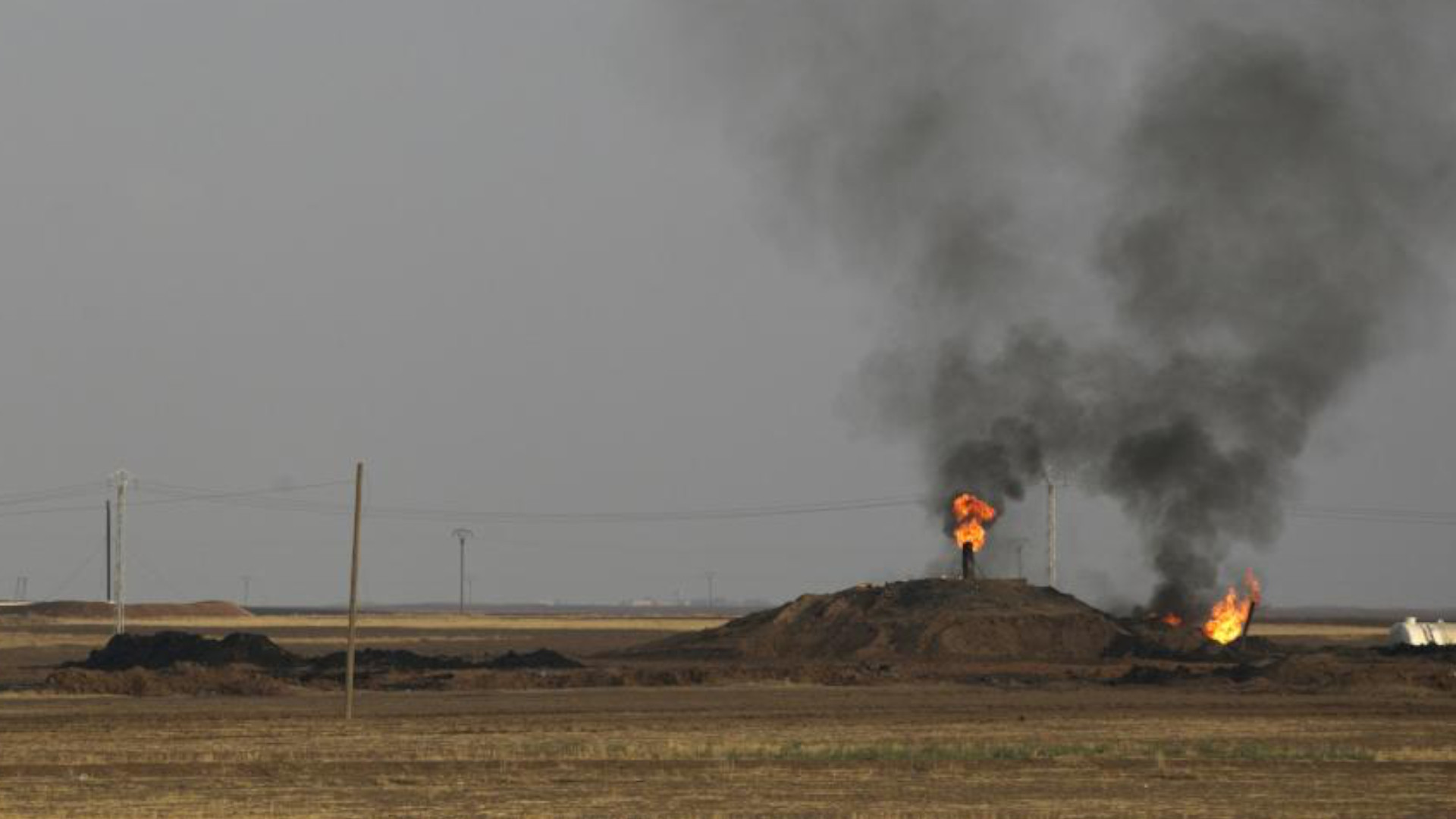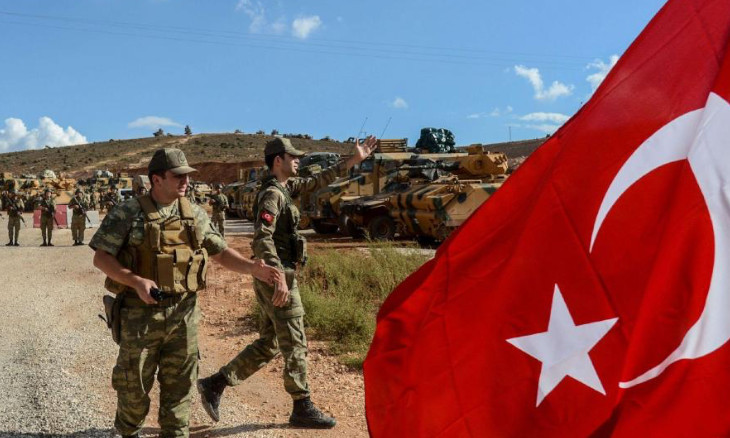Sedat Peker's revelations and the story of al-Nusra Front
There have been recent claims from exiled mafia boss Sedat Peker that weapons were sent from Turkey to the al-Nusra Front in Syria under the guise of aid to the Turkmens. This makes the story of al-Nusra even more interesting. Nusra, known as the “Syrian branch of al-Qaeda,” had a vague relationship with the center of the organization. No one was able to publicly support Nusra. Who could afford to arm and equip al-Qaeda’s Syrian branch?
Upon mafia boss Sedat Peker’s shocking claims that weapons were sent to the al-Nusra Front in Syria from Turkey under the guise of aid to the Turkmens, the story of al-Nusra became even more interesting. We can look back to the days when Nusra, now known as the Syrian branch of al-Qaeda, was preparing to break away from the Islamic State of Iraq.
On April 8, 2013, al-Furqan, the publication of the Islamic State of Iraq, broadcast a speech by leader Abu Bakr al-Baghdadi. In the audio recording, Baghdadi described Abu Mohammad al-Julani as “one of our soldiers” and called the Nusra Front fighters “our sons.” He said, “We appointed one of our soldiers, al-Julani, and a group of our sons with him as our proxy, and sent them from Iraq to the Levant to meet our cells in the Levant... We made plans for them, organized how they would work, gave them financial support every month as much as we could, and supported them with people who know the jihad battlefields.”
Al-Baghdadi also said, “It is time to declare it in front of the Levant and the people of the world that the al-Nusra Front is an extension of the Islamic State of Iraq (ISI) and is a part of it.”
None of these names would be used anymore because there was then only one organization: the Islamic State of Iraq and Damascus (Levant). Thus, the organization, which is referred to by its adversaries as DAESH or DEASH because of the negative connotation in Arabic (IŞİD in Turkish), was born.
Baghdadi addressed the non-jihadist segments of the Syrian opposition, saying “do not shed the blood of thousands of you for democracy,” explaining that they had set up cells in the Levant whose mission was “just to prepare, provide logistics and wait for the opportunity to walk the path of Allah,” reiterating that they would now fight “under the name of the Islamic State of Iraq and Damascus.”
Just two days before this announcement, al-Qaeda’s official propaganda outlet, As Sahab, posted a call from Zawahiri, saying, “Do your best to reap the fruits of jihad. By Allah’s blessing, establish a jihadist Islamic state.”
Baghdadi’s statement was perceived as a step in that direction, but, in reality, the situation was quite different.
Julani has a different path
Nusra’s official broadcast, Al-Manara al-Bayda (the White Minaret), Julani responded to Baghdadi, saying, “With all due respect, our organization is a separate one.” He seemed to have the proper dose of respect because Julani quoted the leader of the Islamic State, saying, “God bless him, Sheikh Baghdadi. He approved our plan to support the oppressed in al-Sham (Damascus), gave us money and made some of our brothers accompany us…” Recalling that they wanted the Islamic flag to fly in Iraq, he said their job was now in Syria.
Neither Baghdadi nor anyone within Al-Nusra knew about the decision or that such a statement would be made. Al-Nusra was affiliated with the central al-Qaeda. He recognized the authority of Ayman al-Zawahiri in Pakistan, not Baghdadi in Iraq.
The Nusra-ISIS relationship remained uncertain until the summer of 2013, when the number of organizations fighting against the regime in Syria reached 1,200. There were no official statements regarding this in their official media outlets. Finally, at the end of May, Zawahiri sent a letter saying, "Well, let one of you work in Syria and the other one work in Iraq; but cooperate.”
Zawahiri’s view was good for Julani, he started mentioning and spreading it. Then, Al Jazeera broadcast Zawahiri’s letter.
Both were mistaken
In the letter, dated May 23, 2013, the al-Qaeda leader clearly said that “both have done wrong.” Al Baghdadi “was wrong when he announced the Islamic State in Iraq and the Levant without asking permission, receiving advice from us, or even without notifying us.” He went on to say Al Julani “was wrong” in rejecting al Baghdadi’s announcement and “by showing his links to al Qaeda without having our permission or advice, even without notifying us.” Zawahiri told those in Iraq, “ISIS has been abolished; continue to operate as ISI.” At the end of his letter, he put verses from the Koran, from surah Hud, saying, “I only intend to reform to the best of my ability.” But then, Zawahiri’s abilities fell short.
In an audio message released on June 15, 2013, Baghdadi exclaimed, “As long as we have veins where blood flows and an eye that see, the Islamic State of Iraq and Damascus will remain. (...) we will not give up and we will not compromise; until we die!” The ISIS leader said, “I chose the command of God over the command that runs against it in the letter.”
Thus, ISIS directly objected to the central al-Qaeda. The mediators Zawahiri sent were not able to change the course of events. Just the opposite.
Abu Mohammad al-Adnani was one of the stars of ISIS before he was killed by a bomb dropped from a U.S. warplane while driving around al-Bab in August 2016. As the spokesman for ISIS, he told al-Furqan Media that “no one can turn us away from our path.” He declared that they had never pledged allegiance to al-Qaeda, that they did not recognize the Iraq-Syria border, and that they would “bomb all Rafizi (Shiites) from Diyala to Beirut.” He confronted not only all Shiites and organizations in the region, but also al-Qaeda's Julani and his organization.
Adnani also addressed Zawahiri. He had objections against him: (1) You ordered us to sin, (2) You have approved the borders of the Middle East according to the Sykes-Picot Agreement, (3) You have credited al-Nusra’s “disobedient rebels,” (4) You have set a precedent for disobedience, (5) You have reached a decision without sufficient consultation with the parties, (6) These have only worked in favor of the enemies of the mujahedeen, and (7) It is pointless to ask the withdrawal of mujahedeen from Syria.
One flag and one emir?
The separation was becoming permanent. From Tunisia to Saudi Arabia, religious scholars, jihadist thinkers, and political administrators were debating. Some suggested that all conditions existed for an unrestricted allegiance to Baghdadi, others recalled how victories on the battlefield were lost in internal fights, and called on “brothers” in ISIS and Nusra to fight “under one flag and one emir.” There were others who suggested that any emir who would be treated as a caliph, did not yet exist.
Nusra, on the other hand, as a Syrian organization, established contact and closeness easily with other opposition groups, uniting against ISIS in northern Syria in early 2014. They drove it out of most of Idlib and Aleppo. ISIS lost 7,000 fighters in these battles.
In February 2014, Ayman al-Zawahiri declared that al-Qaeda had “no ties” with ISIS. ISIS, in return, changed its name to the "Islamic State" (IS). The militants and their followers now referred to it only as “The State.” There was only one Islamic State, and that was them.
Nusra, known as the “Syrian branch of al-Qaeda,” had a vague, somewhat “open to speculation” relationship with the center of the organization. No one was able to publicly support Nusra, the most powerful of the armed jihadist organizations against the Assad rule. Who could afford to arm and equip al-Qaeda’s Syrian branch?
This tension has shaped all the political steps of Nusra. Each time, the group had to take steps to distance itself from al-Qaeda’s authority.
It seems that in the spring of 2015, Nusra’s al-Qaeda link did not create a major problem for those who wanted to overthrow the Damascus regime.
Nusra, together with Ahrar al-Sham, formed the main body of the Army of Conquest, which was formed with the encouragement and support of Saudi Arabia, Qatar, and Turkey. There was increasing Nusra dominance in those regions which the Syrian army was not able to capture.
Two years later, in early February 2016, the U.S. and Russia reached a “cessation of hostilities” agreement resulting in a two-week ceasefire. The deal covered all organizations and the Syrian regime, except Nusra and IS. Nusra was still considered an al-Qaeda affiliate. No one objected to the bombing of the Islamic State group; however, almost all organizations wanted Nusra to be protected by the ceasefire. Because it was the most powerful armed organization. There were calls from the ranks of the Free Syrian Army (FSA), such as, “We call on all groups that cooperate with Nusra, to pressure Nusra, to sever ties with al-Qaeda; so that civilians are not killed in the name of fighting terrorism.”
Cover over cover
The pragmatic leader Julani found a way not to attract the reaction of the world’s jihadists. In July 2016, he formed the “Jabhat Fatah al-Sham (JFS)” (Front for the Conquest of Syria/the Levant) with various organizations he had gathered around him. He was at the core of this new umbrella organization and ruled it. He thought he would be invisible under the organization. The JFS should not have the problem of having any links to al-Qaeda because it was a combination of organizations that were far from that relationship. When Nusra, now the JFC, was at odds with other organizations, they would say, “Did we not cut off our relationship with al-Qaeda for the good of the Syrian Revolution?”
Despite this, everyone continued to treat the JFC as an extension of Nusra and Nusra as an extension of al-Qaeda. In many places, JFC members continued to sign Nusra on slogans they wrote on walls.
At the beginning of 2017, the JFC followed the goal of achieving absolute dominance in Idlib. They attacked the headquarters of Ahrar al-Sham, the only organization that could challenge him as well as intimidated and dismantled several other affiliated organizations. At that time, there was a wide front against the JFC. Many religious scholars issued fatwas accusing them. The organization defended itself saying, “We are not like the IS; we do not declare anyone a kafir; we do not kill people after dressing them in orange prisoner uniforms.” They urged others to agree with them and join forces.
Then, he made a new political-diplomatic move. He formed a coalition of about 100 organizations, including the Nureddin Zengi Movement, one of Ankara’s favorites, and thus, another cover was built around the Nusra core. With this new coalition, he formed another cover around the Nusra core. Its name was Hay’at Tahrir al-Sham (HTS), or the “Organization for the Liberation of the Levant.” Although he hid behind gestures such as making the former Ahrar leader a political leader, the rule again belonged to the Nusra core and Julani was the commander-in-chief of its armed forces.
Just in case, HTS declared that it has no ties to al-Qaeda. Parallel to this, it began to imply that it could evolve into a civilian force that would play a role in Syria’s future. Before that, however, it created a new wave of violence, either eliminating or dominating all possible rivals. It started controlling almost the entire Idlib-Hatay border. It seized the so-called “smuggling segments” at the border, and, most importantly, took full control of the traffic at the Bâb al-Heva (across Cilvegözü) border crossing with all the revenue from the border gate.
The greater Idlib, which is the armed opposition zone is now almost entirely under the control of HTS. Only a short time later, the organization would have to share the military surveillance of the region with an army much stronger than itself: The Turkish Armed Forces (TSK).
To be continued…


 Mafia leader discloses Turkish company involved in Syrian oil tradeWorld
Mafia leader discloses Turkish company involved in Syrian oil tradeWorld Turkey and the future dilemmas of IdlibOpinion
Turkey and the future dilemmas of IdlibOpinion